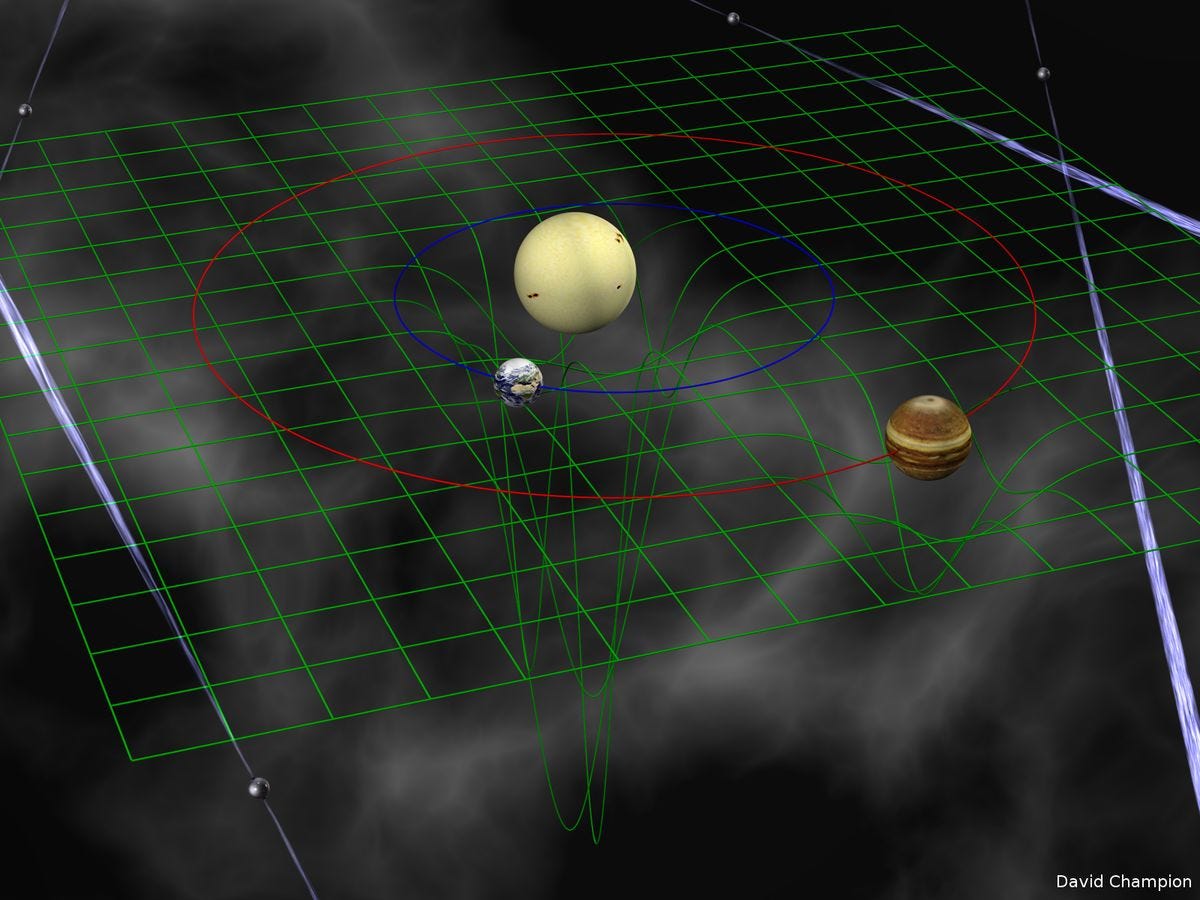Isaac Newton first contemplated that gravity's pull was instantaneous, this idea was then cogently negated by Albert Einstein by formulating that space is not just an empty medium for matter to exist, but is a major component itself. Mass stretches the fabric of space, curving time and distance causing objects to accelerate towards each other. Just as the speed of a photon in a vacuum is constrained by the Universe's upper speed limit, the massless space-time warps would also be energy whizzing along at maximum speeds. Specifically, gravity turns out to be something moving at 299,792,458 meters per second, or what we simply call ‘c’.
Objects, much heavier than Sun, when orbiting one another, lose energy by undulating space. Soon before total collision, the energy they emit equals something like 10 times the amount of energy drawn off from every star in the Universe. By the time it reaches us, each wave gets ten thousand times smaller than a proton, passing in just one fifth of a second.
We are reliant on a network of 4 kilometers long light beams positioned at right angles to detect those undulations. A physicist, Neil Cornish, from Montana State University, stated "Until the advent of gravitational wave astronomy, we had no way to directly measure the speed of gravity".
"The speed of gravity, like the speed of light, is one of the fundamental constants in the Universe," says Cornish.
Researchers can procure a handy insight of gravitational waves’ total speed by analyzing the exact timing when they hit different observatories across the globe. Cornish's team of researchers analyzed the timings of the first three detections and ascertained the speed of the waves between 55 and 142 percent of c, which could be narrowed down to 1 percent precision by measuring just another five gravitational waves this way.
Another team analyzed the gamma ray burst from neutron star collision, spotted last month, came up with their own evaluation using a bit precise method. They found the difference between the gamma ray burst and the thunderclap of the gravitational wave to be within - 3 x 10^-15 and 7 x 10^-16 of c.
Being impacted with Earth's strong hold, gravity is hard to measure. But obtaining comparable results using different methods is quite an assurance itself, allowing scientists to further explore from hidden dimensions to the basic properties of space.

